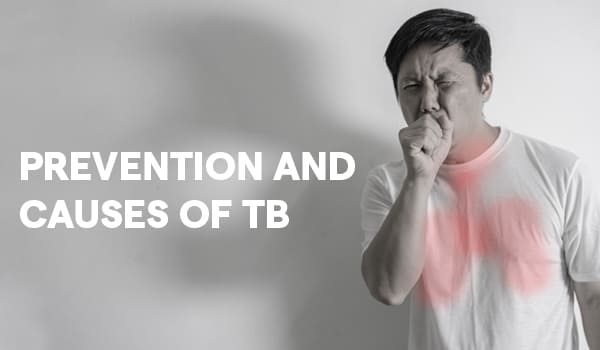Following closely, Delhi reported an incidence rate of 473, and Puducherry recorded 291 cases per 100,000 people by the end of November this year. In Haryana, the number of notified TB cases increased by 12%, rising from 62,697 in 2022 to 70,393 in 2023. High rates of TB infection, as seen in India, with Delhi and Puducherry having some of the highest incidences, highlight the importance of recognizing the symptoms of Tuberculosis.
Symptoms of Tuberculosis:
- Persistent cough: A dry cough that lasts longer than three weeks is a key symptom of TB. It may be dry or productive, bringing up mucus (phlegm) that may be bloody.
- Chest pain: A stabbing and hard pain in the chest, especially when coughing or breathing deeply, can be a sign of TB.
- Fatigue: Feeling tired and drained all the time is a common symptom of TB.
- Weight loss: Unexplained weight loss occurs due to TB as the body fights the infection.
- Night sweats: Waking up at night with sweat may be a sign of TB, particularly if it is accompanied by chills or fever.One of the main challenges in combating TB in India is the lack of awareness and education about the disease. Many people do not know how TB is spread or how to prevent it, leading to a high number of new infections each year. The best medicine hospital in Delhi, Sir Ganga Ram Hospital gives a detailed analysis of TB in India.
Several factors contribute to the high prevalence of TB in India:
- Socioeconomic factors: Poverty, malnutrition, and overcrowded living conditions weaken the immune system, making people more susceptible to TB infection and progressing to active disease.
- Behavioral factors: Smoking, alcohol use, and diabetes all contribute to a weakened immune & increased risk of TB.
- Healthcare access: Limited access to quality healthcare can delay diagnosis and treatment, allowing TB to spread further.
- HIV co-infection: HIV weakens the immune system significantly, making people with HIV much more likely to develop active TB if they are infected with the bacteria.Despite the challenges posed by TB in India, According to the World Health Organization (WHO), the success rate of TB treatment in India is high, with over 80% of patients who complete the full course of treatment being cured of the disease. This success rate is a result of efforts to improve access to healthcare, increase awareness about TB, and provide support to patients throughout their treatment. Additionally, the development of new drugs and treatment regimens offers promise for further improving outcomes for TB patients in India. This is a testament to the effectiveness of the available treatments, as well as the dedication and hard work of healthcare providers and TB control programs across the country in understanding TB prevention and treatment efforts.
There are two main approaches to preventing TB:
- Vaccination: The BCG vaccine is commonly used to prevent TB cases. Additionally, early detection and treatment of TB cases are important in preventing the spread of the disease within communities. The vaccine is the most widely used globally, but its effectiveness varies. It's generally more effective at preventing severe TB in children.
- Preventing the Spread of Infection: This involves several strategies:
- Good ventilation and hygiene: Ensure proper airflow in spaces where people gather and encourage covering coughs and sneezes.
- Early diagnosis and treatment: Identifying and treating active TB cases quickly limits the spread of the bacteria.
- Treatment for latent TB: If you have latent TB, taking medication can prevent it from progressing to active TB.In addition to these preventive measures, individuals must be aware of the symptoms of TB so that they can seek proper medical attention if necessary. The Pradhan Mantri TB Mukt Bharat Abhiyan (Prime Minister's TB-Free India Campaign) is a government initiative launched in 2018 to reduce TB cases in India by 2025. The campaign aims to strengthen the prevention of Tuberculosis by increasing awareness about the disease, improving access to quality healthcare services, ensuring timely diagnosis & treatment for all TB patients, and providing comprehensive care and support. The initiative also prioritizes the needs of vulnerable populations, such as those living in poverty or individuals with HIV/AIDS, and residents of overcrowded areas, who are at a higher risk of developing TB due to weakened immune systems and limited access to healthcare. The campaign, launched in 2018, has led to an increase in the number of people being diagnosed and treated for TB, with over 2.5 million TB patients being treated under the program in the first year alone. With continued commitment, dedication, and collaborative efforts, achieving a TB-free India is a feasible and impactful goal. By addressing the mentioned challenges faced by populations, the initiative aims to eliminate the burden of TB in India and improve overall public health outcomes. Through ongoing support and innovation, progress towards eradicating TB can be sustained for future generations. Sir Ganga Ram Hospital provides a range of advanced diagnostic care. Book an appointment to learn more about Tuberculosis. Early detection is the key to stopping the spread of TB and ensuring a full recovery.
Sources:
